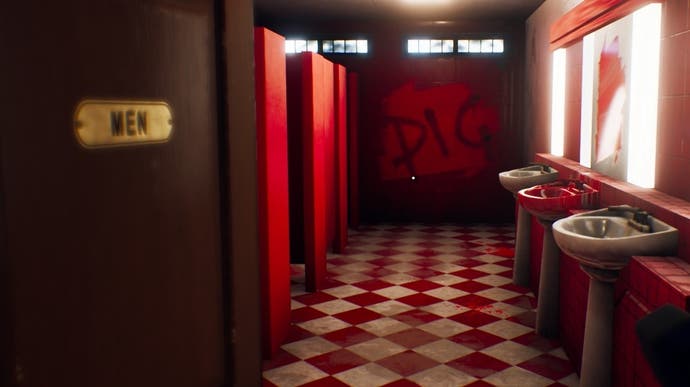The Suicide of Rachel Foster review - a Shining-esque riff on Gone Home that doesn't quite dazzle
B&Bump in the night.
It doesn't take much to make a big, old, empty house feel creepy. Indeed, the more actual, overt threat you add to such a setting, the less fear it inspires - better to let your visitor wander undisturbed, drinking in the silence of the hallways and spotting goblin faces in the contours of broken plaster. This is one thing the creators of The Suicide of Rachel Foster grasp well, though their workmanlike blend of Firewatch and Gone Home is ultimately tripped up by a half-baked story.
A three-hour, first-person psychodrama with a gossamer-thin dusting of puzzles, the game is set in the Timberline Lodge, an abandoned mountainside hotel in 1990s Montana. You can roam about freely from the outset, though chapter breaks teleport you from room to room, and to do so is to be gently assaulted by the peculiarities of a structure that wouldn't seem out of place in Silent Hill. Floorboards creak, window-frames rattle, beams shift under a mounting weight of snow. Photographs stare from the ends of corridors, shrouded objects tempt you to pull back the sheet, and stainless steel kitchens tease your fight-or-flight circuits with their abundance of gleaming points and angles.
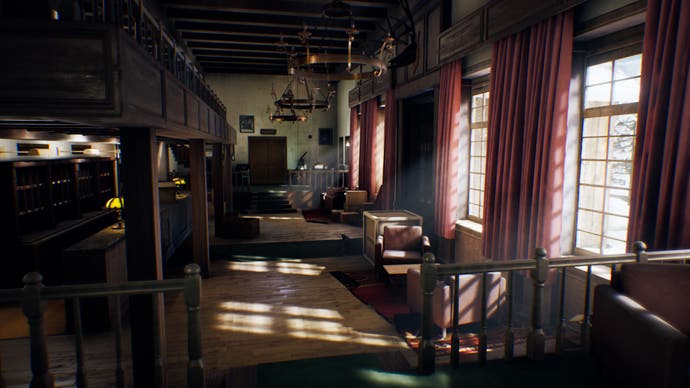
Spread over three storeys plus a basement and carpark, the Timberline is closer to a Comfort Inn than some Gothic resort, but in the absence of holidaymakers and staff, its spaces loom. It's also a not-so-discreet homage to The Shining's Overlook Hotel, which means that the sightlines and decor feel vaguely predatory, like they're trying to get into your head. You'll find those legendary geometric carpet patterns, a mountain diorama akin to the Overlook's model maze, and bathrooms painted a diabolical red.
Mixed in amongst these mildly threatening objects are hints of outright paranormal activity - a point on the stair where you can hear a voice (or could it be the squeak of carpet on wood?), a strange pink butterfly, hovering by a gap in the wall - but the spooky elements are sparingly deployed. Where mood is concerned, The Suicide of Rachel Foster trusts its architecture to do the heavy lifting. At least, that is, until the memories those walls contain emerge into the light.
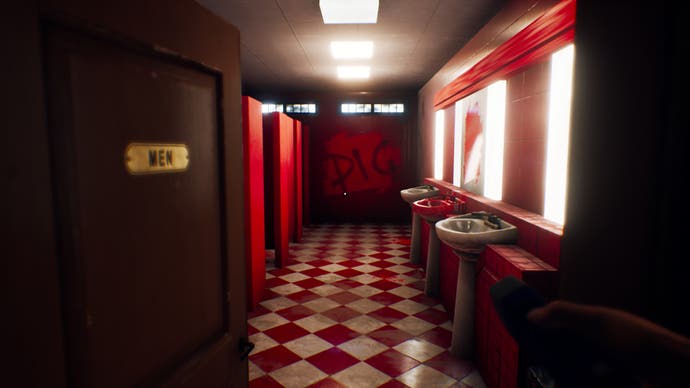
You play Nicole, daughter of the hotel's owners. Years ago, she and her mother fled the property after learning of her father's infidelity with the titular Rachel, a 16-year-old girl. With both her parents and Rachel now deceased, Nicole has returned to survey the Timberline before selling it off and washing her hands of a painful upbringing. Fate, as ever, intervenes, and Nicole is trapped for several days by a snowstorm, holing up in her old teenage room and scouring the property for supplies. Keeping you company throughout this unintended vigil is Irving, a boyish FEMA agent who contacts you over cellphone to offer survival tips, banter and a sympathetic ear, as Nicole sifts through old belongings and revisits her relationship with her dad.
It's a straightforward journey of self-discovery, nudged along by a very undemanding to-do list. Each chapter is mostly about going from A to B, whether to fetch beans from the larder, restart a generator or investigate a distant noise. You've got a paper map with the objective doodled on it, and Nicole picks up a few tools to help her explore - a Polaroid camera, a hand-cranked torch and a radar-dish microphone, borrowed from some long-fled ghost-hunters.
These items tantalise with the thought of Paranormal Activity-style forensic investigations. I was hoping the Timberline would contain a darkroom, so I could discover what I'd unwittingly photographed while using the Polaroid's flash to navigate during a blackout. But the puzzles remain scanty even as the plot builds to a head - they exist to keep you moving back and forth through chambers you're increasingly wary of, rather than to satisfy in themselves. You're required to use the antennae a grand total of twice, though I kept waving it at walls in case some passing phantom fancied a word. The lack of gamey elements is to the atmosphere's benefit, perhaps, but the game does feel oddly timid about its own tools. I don't need a full-on subgame in the style of Condemned's CSI mechanics, but another couple of chapters in which to play detective wouldn't have hurt the pace.
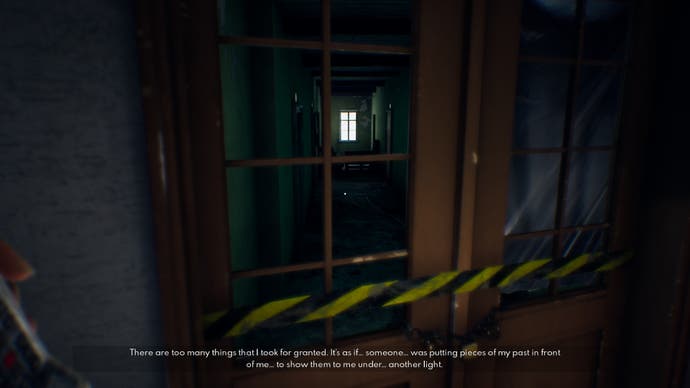
The story's major revelations surround those few parts of the house that are tricky to access: the unlit crawlspaces that seem to have exits everywhere, and the ruined wing on the second floor. Piercing those recesses is fun, but the revelations themselves are a disappointment softened only by the ease with which you see them coming. The Suicide of Rachel Foster is quite effectively written and acted, at first - Nicole is an endearingly tough, drawling lead, and there's some pleasant suspense around Irving, the bumbling guardian angel who has secrets of his own. Dialogue options allow you to tweak their relationship a little, providing you react in time - you might steer Nicole toward or away from the thought of ghosts, for example - but while there are several endings, the arc of the plot is set in stone.
Sadly, what spark Nicole and Irving share is lost in a giant, ketchup-bottle dollop of exposition towards the finale, which exposes the game's thinking about grief and toxic family dynamics for a bunch of very old rope. The script regards things like trauma and self-harm as morbid literary devices, rather than psychological phenomena. It doesn't add to your understanding of these difficult emotions, or question its own assumptions - dealing with pain doesn't have to boil down to "confronting the past", for instance. Moving on may be the healthier option.
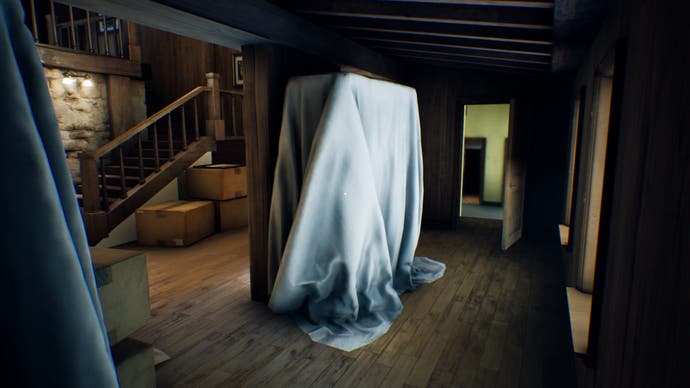
A work of fiction is, of course, under no obligation to speak usefully about grief and suicide, but this is a mental health fable I've heard many times before, wrung dry of curiosity or power. I'd like to play games that tackle these subjects in more alert, challenging ways. More seriously, The Suicide of Rachel Foster is pretty indulgent of the whole "sleeping with under-age girls" thing, though we should be careful not to confuse what characters say with authorial statement. It toys with the notion of a forbidden love, and ultimately lumbers Nicole, a child bystander, with the burden of processing the fallout. There's the suggestion, at times, that the real villains of this piece are not misbehaving men but the women caught up in their orbit.
It's a shame, because the Timberline Lodge is a place you won't soon forget - at its best, it reminds me of Kitty Horrorshow's ANATOMY, which puts the idea of house as paranormal entity under a microscope without, somehow, robbing this concept of its chill. If you're planning on playing it, I advise you to spend as much time as possible avoiding the plot, touring this lovingly hammered-together structure and filling it with spooks and speculations of your own.
In the UK and Ireland, Samaritans can be contacted on 116 123 or email jo@samaritans.org or jo@samaritans.ie. In the US, the National Suicide Prevention Lifeline is 1-800-273-8255. In Australia, the crisis support service Lifeline is 13 11 14. Other international suicide helplines can be found at www.befrienders.org.
